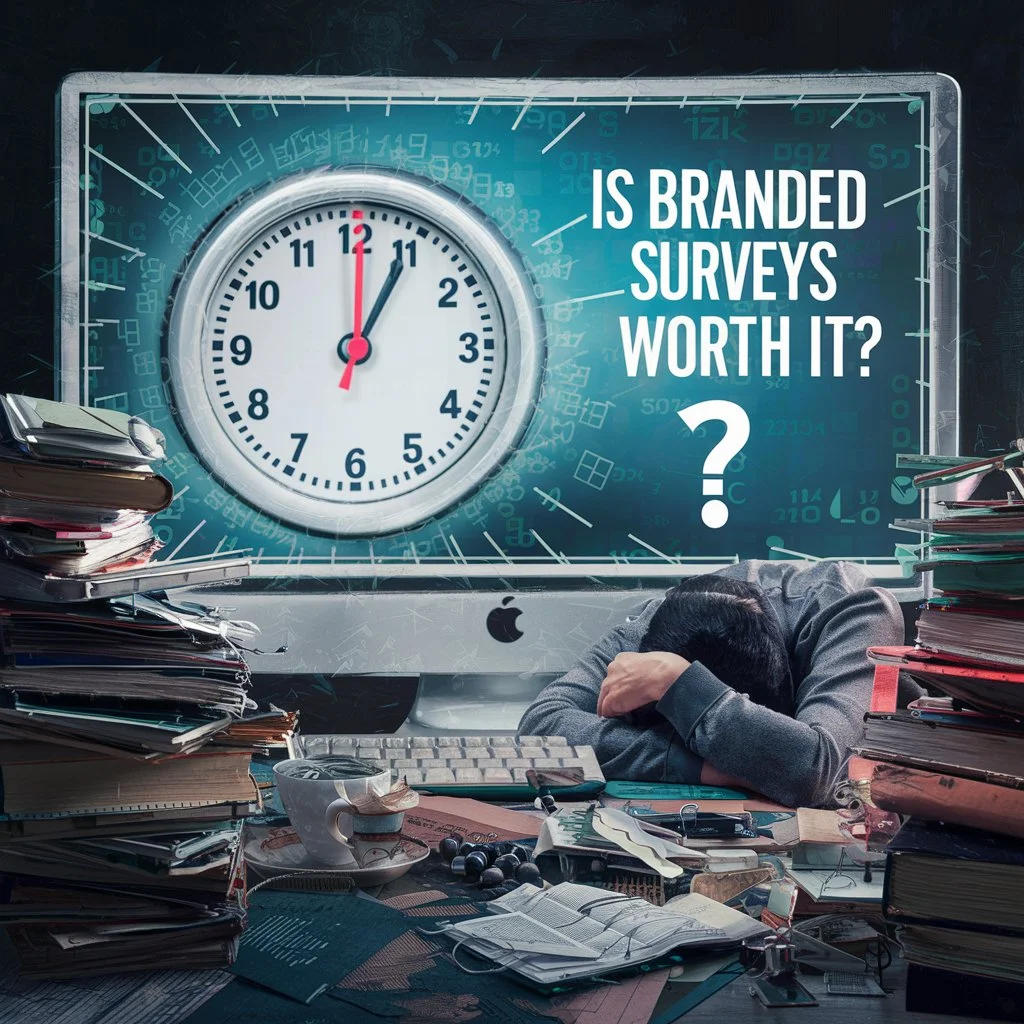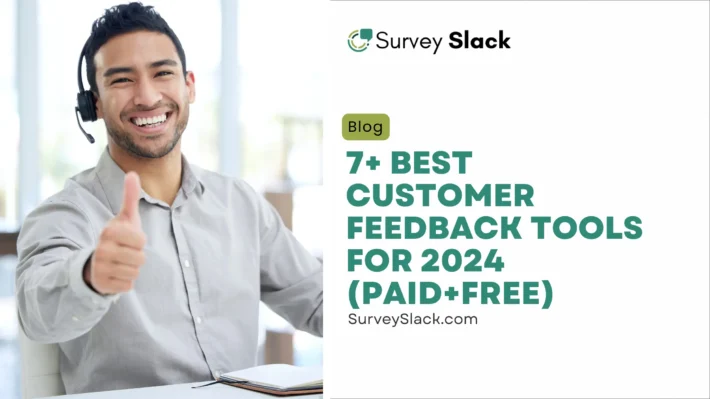The Ultimate Guide to Branded Surveys: What You Need to Know

This guide covers branded surveys in market research and consumer feedback. It offers insights into their importance, benefits, and best practices.
Brand surveys go beyond traditional questionnaires, incorporating a company’s unique identity and messaging.
The guide is also for marketers, business owners, and people interested in market research.
It aims to help readers craft surveys that connect with their target audience. It also helps turn insights into actionable plans.
What is branded surveys?
Branded Surveys is a platform. It connects people with market research companies. The companies seek consumer opinions.
It is a middle ground. You share your thoughts and earn rewards. In return, companies gain insights to improve their products and services and build brand image.
Why are branded surveys important for businesses?
The Branded survey measures brand awareness. It is crucial for helping businesses get insights and make decisions. The importance of businesses can be attributed to several key factors:

1. Brand Engagement and Recognition:
To reinforce a company’s identity and help in building brand recognition. When respondents see a survey with a familiar and trusted brand, they are more likely to join. This engagement can strengthen the connection between the brand and its audience.
2. Trust and Credibility:
Respondents see well-known brands as more trustworthy and credible. The brand’s credibility can boost the survey’s legitimacy. This can lead to more honest and reliable responses.
3. Customer Loyalty:
Engaging customers demonstrates a commitment to understanding their needs and preferences. Focusing on customer feedback can boost loyalty. Customers like when their opinions are valued. Their opinions are considered in shaping products, services, or business strategies.
4. Market Research and Competitive Advantage:
Branded surveys are effective tools for conducting market research. They help businesses gain insights into market trends, customer behavior, and competitive landscapes. The data is invaluable. It’s for making strategic decisions. It’s for staying ahead of rivals and adapting to market changes.
5. Product and Service Improvement:
Surveys give businesses direct feedback from customers. This helps them find areas to improve in products or services. By addressing customer concerns and preferences, businesses can improve their offerings. This leads to more satisfaction and loyalty.
6. Targeted Audience Engagement:
Hence allows businesses to tailor questions and content to their specific audience. This targeted approach ensures that the data collected is relevant and actionable. Businesses can improve their strategies. They can do this by understanding the unique needs of their customers.
7. Brand Innovation:
A source of innovative ideas and insights. By involving customers in innovation, businesses can gather suggestions and feedback. They may lead to new products or services. These additions will help the brand grow and change.
8. Marketing and Communication Strategy:
Surveys provide an opportunity for brands to communicate directly with their audience. This interaction can help marketing. Businesses can share survey results and customer testimonials. They can also show their commitment to customer satisfaction. This reinforces their brand message.
What type of information do you need to gather from your audience?
The branded survey focuses on understanding your audience and doing brand awareness. This is crucial for any survey, no matter the brand. Here’s what kind of information you typically need to gather from your audience:

1. Demographics:
- Age
- Gender
- Location (city, state, country)
- Income level
- Education level
- Occupation
2. Psychographics:
- Interests
- Hobbies
- Values
- Lifestyle
- Personality traits
3. Behavioral:
- Past experiences with your brand or similar products/services
- Purchase history
- Usage habits
- Media consumption habits
4. Attitudinal:
- Opinions and beliefs about your brand, industry, or relevant topics
- Perceptions of your brand’s strengths and weaknesses
- Sentiments toward your brand and its competitors
5. Needs and expectations:
- What are their pain points or challenges?
- What are their goals and aspirations?
- What do they expect from your brand or product/service?
Gathering this information allows you to:
- Target the right audience. Tailor your survey questions to fit their demographics and interests.
- Craft effective questions. Use words and examples that are relevant to your audience.
- Boost response rates. People are more likely to do surveys that matter to them and are interesting.
- Gain deeper insights. Analyze the data in the context of your audience’s traits. This will help you find valuable trends and patterns.
How does branded surveys work?
It acts as a bridge. It connects you, the participant, with research companies. They seek valuable insights. Here’s a breakdown of the process:

Registration:
- Typically, users need to register on the Branded Surveys website. This involves creating an account. You provide basic information like name, email, and demographics.
Profile Completion:
- Users may have to complete a survey. It provides extra info about them. This helps in matching relevant users based on their demographics.
Survey Opportunities:
- After users finish the registration and profile setup, they see a list of surveys they can take. They can cover many topics. They may come from many companies or organizations seeking consumer opinions.
Earning Points:
- Survey platforms, like Branded Surveys, give points instead of cash for completing surveys.
Redeeming Points:
- You can usually redeem accumulated points for rewards. These include gift cards, UPI or PayPal cash, and other items. Each platform may have its own set of reward options and redemption thresholds.
Referral Programs:
- Some survey platforms have referral programs. Users can earn more points by referring friends and family to the platform.
Payment Process:
- Once a user reaches the minimum redemption threshold, they can cash out. Payments or rewards are typically processed within a specified timeframe.
Privacy and Security:
- Reputable survey platforms put user privacy first. They ensure that the information is handled securely. They often have strict data protection policies in place.
Community and Support:
- Some survey platforms foster a sense of community. They let users share experiences and tips. Additionally, support is available to help customers. They can assist with any issues users encounter.
How to create branded Surveys?
Creating branded surveys is crucial. It helps you get valuable feedback from your audience and also to spread brand awareness. They also help you keep a professional and consistent brand image. Here’s a step-by-step on how to create:

1. Define Your Goals and Audience:
- What information do you seek? Customer satisfaction, product feedback, or brand perception?
- Know your audience. Tailor the survey to their demographics and preferences. Use language and format that they will like.
2. Embrace Your Brand Identity:
- Integrate your logo, color scheme, and fonts seamlessly throughout the survey.
- Messaging should have a consistent brand voice. This applies to questions, instructions, and thank you messages.
3. Leverage Survey Creation Tools:
- Explore online platforms many survey tools offer branding features. These let you customize colors, logos, and themes.
- Consider professional design for complex surveys or a unique look, consider working with a designer.
4. Optimize for User Experience:
- Ensure your survey renders flawlessly on all devices, especially smartphones.
- Be clear and concise. Avoid jargon and technical language.
- Include a progress bar to motivate respondents and improve completion rates.
5. Promote and Distribute Effectively:
- Choose the right way to reach your target audience. These may include emails or social media.
- The call to action should be clear. It should urge people to join the survey.
6. Analyze and Act on Insights:
- Analyzing data means finding insights in it. Use these insights to guide decisions.
- Share key findings with your audience. This shows your commitment to their feedback.
What are the Branded Surveys problems?
They offer a platform to earn rewards through surveys. But, it’s important to be aware of its downsides:

1. Users may encounter technical issues. These include website errors, survey pages not loading, and submission problems. These issues can be frustrating and might affect the overall user experience.
2. Some users may face payment delays. They may also have issues redeeming rewards. Survey platforms must have a reliable payment system. It’s essential for keeping user trust.
3. Surveys can take a lot of time. Some may take longer than promised. This can be frustrating if you’re expecting quick rewards.
4. You might be disqualified after starting a survey. This can happen due to your demographics or answers. This can be a waste of time and effort.
5. Opportunities for surveys are limited. Users may be unhappy if there are not enough or if they don’t qualify for many of the surveys. A shortage of survey opportunities can impact the overall earning potential for users.
6. Users might face account suspension or termination. This happens often due to terms of service violations or suspected fraud. Clear communication about rule violations is crucial to prevent misunderstandings.
7. People in online surveys may worry about the privacy and security of their data. We must ensure strong data protection. We must also have clear privacy policies. These are essential for keeping user trust.
You must weigh these drawbacks against the benefits to make an informed decision. It’s crucial to see if it aligns with your expectations and goals.
Is Branded Surveys Worth It?
Whether a Brand Survey is good for you depends on your priorities and expectations. Let’s break down the pros and cons to help you decide:

Pros:
- Branded Surveys is a well-established platform with a positive reputation.
- There are a variety of surveys. They cover many topics. This increases your chances of finding the ones you qualify for.
- You need to collect your points to get cash, gift cards, or donations.
- The platform is easy to navigate and use.
Cons:
- The earning potential is low. You can earn some extra money. But, it won’t be a big source of income.
- You might answer screening questions for a survey. Then, you might get disqualified, wasting your time.
- Completing it can be time-consuming, especially compared to the potential rewards.
Conclusion:
Surveys with a brand’s name are valuable for businesses. They use them to talk to their audience. They also use them to learn things. And, to reach marketing goals.
Understanding the types of data collected is key. Making and using surveys can improve brand awareness for companies. Follow the steps for it. They can also improve loyalty and product development. This is more important than the cost and traditional survey fatigue.
It’s hard to invest in something valuable. This is true for businesses. They want to improve customer relationships and brand strategy.
Frequently asked question(FAQs):
1. What are the benefits of using branded surveys?
- Surveys with your brand on them offer valuable insights into your target audience. They lead to better brand awareness, customer loyalty, and product development.
2. What types of information can I gather from branded surveys?
- Gather information on demographics, purchasing habits, and brand perception. It will help you understand your customers and tailor your marketing strategy.
3. How much time does it take to create a branded survey?
- The time varies depending on your goals and complexity. Leverage survey creation tools for efficient design and distribution.
4. Are branded surveys expensive?
- Several free and paid options exist. Consider your budget and survey needs when choosing a platform.
5. How can I ensure data security and privacy with branded surveys?
- Choose platforms that prioritize data security with robust encryption and privacy policies. Be transparent with participants about how their information will be used.





